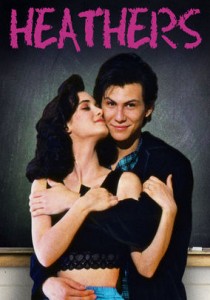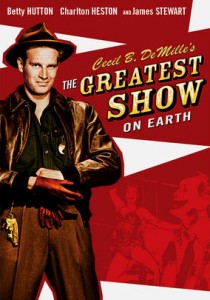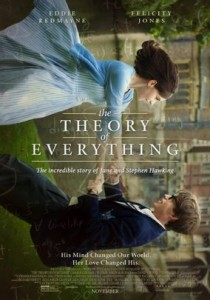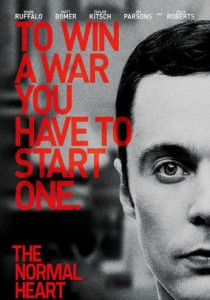Heathers-1989
Director Michael Lehman
Starring Winona Ryder, Christian Slater
Scott’s Review #207
Reviewed December 25, 2014
Grade: B
My gut tells me that Heathers was quite controversial and influential upon release in 1989 and has sustained a cult following that continues to this day- 2014.
Having seen the film for only the first time, in 2014, the film is good, but now suffers from a slightly dated look and feel. Still, it is a brave and unique expression of creativity.
It is a film that sends the message that the popular kids are bad and that the meek shall inherit the earth. The uncool kids will rise.
To summarize the plot, Heathers is told from the perspective of high school student Veronica Sawyer, played by a young Winona Ryder. She is a second-tier popular girl- she is lieutenant to the generals if you will.
The school is run by three popular girls named Heather. As popular as they are, they are also despised and feared by the other students but carry great influence. They enjoy playing cruel jokes on other students and ridiculing anyone beneath them.
A rebellious male student, J.D., played by Christian Slater, befriends Veronica and they hatch a plan to destroy the popular clique, including another pair of popular jocks.
Shannon Doherty plays second in command Heather.
The tone of Heather’s is surreal and dream-like. For example, in the opening scene all three Heathers- along with Veronica- are on a perfectly manicured lawn in the suburbs playing croquet.
The hierarchy is established as Veronica seems to be buried up to her neck and is the target of the croquet balls making her, without question, the lowest of the four girls. Whether or not this is a dream or real is unclear.
The film is well-written and edgy. It reminds me at times of The Ice Storm and American Beauty, which Heathers preceded, and are superior in my opinion.
Heathers is a teen angst film and quite dark at times- the various deaths are committed viciously (drain cleaner poisoning, concocting a setup for the jocks to appear to be having a love affair with each other and then passionately shooting each other), but with sly wit and humor.
Veronica is, at heart, a good girl, albeit misguided and heavily influenced by J.D., but her intentions of having a fair, just school society are noble. The character is likable.
All the parents are hilariously portrayed as buffoons and have no idea of the darkness that exists in their kid’s lives- Veronica’s parents in particular.
Fearing that Veronica has committed or soon will attempt suicide, they fret that it is their fault stemming from childhood negligence, however, their concern has more to do with themselves than with Veronica’s well-being.
Small gripes about the film are the 1980s style outfits and hairstyles, which, since made in the 1980s is not a particular fault of the films- though it does contain a slightly dated feel to it while watching in present times.
Also, Christian Slater mimicking Jack Nicholson’s voice is odd- was this a decision by the film or by the actor himself? Either way, the imitation is both distracting and confusing. What is the point?
The ending of the film is a happy and satisfying conclusion- however, different from the dark tone of the rest of the movie- rumor has it the studio had some influence in toning down the original ending.
1989 was not a stellar year for film so Heathers deserves major props for thinking outside the box and doing something dark and creative.
Brave, inventive, and unique, Heathers is a cult classic worth a look.
Independent Spirit Award Nominees: 1 win-Best Female Lead-Winona Ryder, Best Screenplay, Best First Feature (won)



